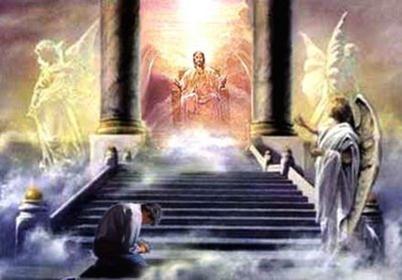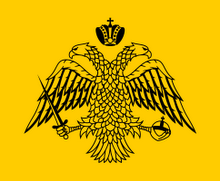
An Orthodox Jewish Wedding with 25,000 guests. A gathering of believers in one place focused on the bride and groom, this is a couple who will, by the support of the family and wider community be a union 'under the eyes of God' be blessed.

The wedding took place between the grandson of the leader of the Hasidic dynasty Belz Rebbe, 18-year-old Shalom Rokeach and 19-year-old bride Hannah Batya Penet in Jerusalem, Israel. Guests traveled internationally to attend.
The bride and groom are from the most important Ultra-Orthodox Jewish families. At some point in the future, Shalom Rokeach will become the leader of this Ultra Orthodox tradition - more can be learned by listening to his grandfather.

In the Ultra orthodox wedding Hasidic bride Hannah Batya Penet is seen wearing a traditional wedding dress with a a heavy veil covering her face, She is seen together with female relatives escorting her to the wedding ceremony.
The bride is the center of the attention. The wedding ceremony lasts for several hours.

'Shalom Rokeach is the eldest and only male grandchild of the Belz Rebbe, who heads one of the largest Hasidic communities in the world. Being the only male, the newlywed is assumed to be the Rebbe's future heir in leading the community.'
Belz Rebbe is an Polish-Jewish dynasty from the 14th Century from the Polish town with the same name. Descendants are considered aristocracy among Orthodox Jews. Members of the community from all over the world invited.

The wedding bought leaders of various Hasidic sects to meet together. Belz Hasids from the United States and Europe attended the celebration, which lasted until dawn. In several Jerusalem streets were shut down for the celebrations.
'Traditional Jewish weddings consist of two separate parts, the betrothal ceremony, known as erusin or kiddushin, and the actual wedding ceremony, known as nisuin.'
'Under the stars: The couple's vows were said underneath a chuppah - a large canopy supported by four poles which is erected outside so the ceremony can be conducted underneath the sky' - outside, their vows took place under the heavens.

The intricate detail of Hannah's lace and crystal encrusted veil, as well as small diamond earrings. Her head is fully covered with a full crown and tiara style diadem. In the Jewish wedding ceremony, bride and groom become King and Queen.
The heavy lace veil allows the bride to avoid the gaze of guests while under the wedding canopy and where she was in front of all the men. Hasidic Jews believe it is important to protect the bride's modesty.

'The veil also recalls the Matriarch Leah, whose face was covered so heavily that Jacob did not know she was not Rachel at the wedding ceremony. The bride only has to wear the veil during the ceremony.'
One lady wrote a comment to clarify the process. 'The bride was only veiled during the ceremonies where she was in front of all the men. During the meal and dancing when she sat with the women, she was NOT VEILED. During her private time with her groom, she wasn't veiled either. It was only during the ceremonies where she is among the men.'

'Orthodox aristocracy: The Belz Hasidic dynasty is one of the largest Hasidic sects in the world' - With every wedding being profoundly significant, with the vast number of guests, people brought binoculars so they could see the service.
All male guests are dressed in black and wear traditional shtreimel hats for this important occasion. Tradition is maintained where men and women are separated especially because the wedding ceremony is a holy and sacred ceremony.
After the ceremony, the bride and members of the family then take part in Mitzvah tantz ritual - "mitzvah-dance" where members of the family and honoured rabbis dance in front of the bride and then with the groom.
Mitzvah means commandment - in this case has the meaning of a custom or tradition.
During the Mintzvah tantz ritual, 'the bride stands perfectly still, holding one end of a long sash while rabbis, the groom’s father, her own father or her grandfather holds the other end and dances with her.'

Tradition holds that the Bride must not touch or be touched by another man and so this allows the men in her family and the honored rabbis to dance with the bride without coming into physical contact with her.
According to the Talmud, it is a great honor to dance for a bride during her wedding.
The biggest Hasidic communities are in Israel and the U.S. Smaller groups are found in Canada, England, Belgium and Australia. The lives of the people within these communities revolve around religious study, prayer and family - the people live in a world without television, films, the internet or secular publications. Preserving pure thought is a necessary and deliberate choice.

These boys are wearing crown type head dress, show they are raised with religious tradition. The gentlemen sitting behind them facing the other way, have their full heads covered with being religious custom for Jewish males to cover their heads. Wearing wearing of two head coverings is considered to add additional spiritual merit. The shtreimel is always worn over a kippah.

A group of children together on the balcony might be from the same and immediate family. Another child is wearing a crown type head dress as above. This might indicate the eldest child as the first born son Prince/Principal is promised to God.
The men grow beards and have sidelocks (peyot). Women dress with strict modestywearing long skirts, long sleeves on tops and high necklines. After women marry, they cover their heads with scarves, hats or wigs (known as 'sheitels').
With a woman becoming Queen during her marriage to her husband King, wearing a hat or wig is like wearing a crown. In non Orthodox backgrounds, hair is often referred to as the Crown of Glory and so a wig is putting on the crown.
The bride wears a full crown covering 'symbolically' shows she has a pure mind and maintains her focus directly to God. A pure mind in union with God to be an intercessor for prayer and divine service is necessary. Hannah's husband being the eldest grandson would be promised to God from birth and so this union is one of divine service for a greater community of people.
Jewish people are God's chosen people with holding a role of responsibility.

These stunning photographs bring the viewer an opportunity to see snapshots of a sacred ceremony, probably much closer than many of the people who attended. This video footage is a small part of the sacred ceremony.
The meaning of a Royal wedding in context first requires us to put aside the snobbery and social order, because in the eyes of God no one is more superior. The bride here is protected by her veil from the eyes of masses of people. Her heart and mind are focused on the commitment she is making with her husband and the responsibility she holds in her role.
The people who hold onto strict religious tradition, do so to become closer to God. The people who maintain strict obedience to their tradition also have been given spiritual teaching and understanding that is necessary to their compliance. The sacred wedding ceremony is with knowing that God has brought two people together for divine service. Under the ever watchful eyes of God this couple will proceed through their life together as one in the focus of keeping God in their home, heart and mind.
The meaning of Orthodox is straight believing and also direct worship. Ultra Orthodox is entailing every aspect of life and marital relationship, to follow 'strict' tradition that is laid down in relation accordingly including prayer, dietary laws. This is being Torah obedient. To be Orthodox embraces spiritual mysteries. In one aspect to follow the laws, another religious practice and also to live with spiritual experience. The focus is to remain and maintain being spiritually pure.
This way of life is tradition and a choice or else there is no sincerity of heart? To have a personal relationship with God, in the first instance in prayer, without sincere heart this divine connection would not be possible.
Many years ago came the realisation why women cover their heads, especially Ultra Orthodox. In ancient times, covering hair had a far greater significance. Hair emits energy and attracts attention that a woman from an Ultra Orthodox culture does not want. Hair also carries DNA and if dropped or not disposed safely, someone could use this to people's detriment (ie in a ritual)
My best wishes to the newly married couple for a lifetime w love and happiness. May the family always be under the protection of God and the true spiritual hearts of the Jewish people be allowed to shine their light and inspire faith.
Peace, love and best wishes
Pauline Maria
No Copyright Infringement intended
http://www.dailymail.co.uk/news/article-2328892/The-bride-25-000-guests-Holding-sash-newlywed-19-waits-relative-perform-Mitzvah-dance-marries-Ultra-Orthodox-Jewish-family.html#ixzz2U9hqKyt2
http://en.wikipedia.org/wiki/Mitzvah_tantz
http://en.wikipedia.org/wiki/Hasidic_Judaism
http://en.wikipedia.org/wiki/Hasidic_childbirth_customs
http://www.pbs.org/alifeapart/intro_3.html







